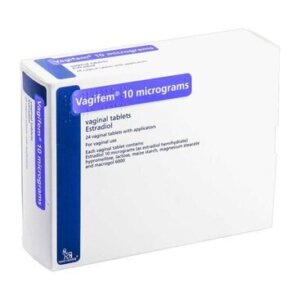One of the almost inevitable consequences of aging is a steady decline in the density of the prominent weight-bearing bones in the body. As these bones weaken, the risk of fractures increases dramatically, which makes keeping bones healthy an essential contributor to the overall quality of life.
There are more than ten million people in the US who have been diagnosed with osteoporosis, and this number is growing every year as the population ages. Also, many people have the condition but have not yet been diagnosed because the symptoms may not be showing, and the required bone mineral density (BMD) tests have not been performed.
How is osteoporosis diagnosed?
The clinical diagnosis of osteoporosis set out by the National Bone Health Alliance Working Group is the finding of a T-score of ≤ −2.5 at the lumbar spine, femur neck, or total hip by bone mineral density (BMD) testing.
To put that into lay terms, bone mineral density tests are usually done on bones that have a higher risk of fracture under stress when a person has osteoporosis, such as in the spine, hip, and forearms. As well patients who have suffered vertebral, proximal humeral, pelvic, or forearm fractures would usually also be tested. Doctors may also order a BMD test for women when they enter perimenopause and for men aged 50 and older.
The result of bone density tests is what is known as the T-score. The standard criterion for diagnosing osteoporosis in postmenopausal women and older men is a T-score lower than -2.5. As T-scores decrease, the relative risk for fracture increases.
In addition to bone mass measurements, clinical assessment and evaluation by a healthcare professional are essential for a comprehensive diagnosis. This may include assessing the individual’s medical history, risk factors, and physical examination.
Do women have an increased risk of developing osteoporosis?
It is quite clear from statistics that women as a group are more likely to develop osteoporosis than men and also to start to show signs of the condition at younger ages. This is primarily due to several gender-specific differences:
- Women, on average, have lighter and smaller bones than men, meaning they have less bone tissue to begin with.
- Changes in hormone levels, especially estrogen, have a marked effect on bone density. Women tend to lose bone mass more rapidly as they age, especially after menopause, when estrogen levels decline steeply.
- A different risk of declining estrogen levels in menopause is the development of breast cancer, but this is not directly related to the progression into osteoporosis.
This tendency for women to develop osteoporosis both earlier and with more severe outcomes means that keeping bones healthy is especially important throughout their lives, starting from when they become fertile.
What are the primary outcomes of osteoporosis?
The main consequence of osteoporosis is weakened bones, which can significantly impact an individual’s health, daily activities, and well-being. The primary risks associated with osteoporosis are:
- There is an increased risk of breaking a bone in everyday activity. Osteoporosis reduces bone density and strength, making bones more susceptible to fractures, particularly in the hip, spine, foot, and wrist. These fractures can result from minor falls, bumps, twists, or jarring.
- Hip fractures are much more common in older women due to the unique shape of the female hip, which is shaped for easier passage of the fetus in childbirth and does not carry weight as effectively as the male hip bones.
- Osteoporosis can cause chronic bone pain, especially in the back and hips, due to micro-fractures within the bones.
- There may be a weakening of the spinal vertebrae, which can lead to a stooped or hunched posture, resulting in a loss of height.
- The risk of bone fractures and pain can significantly limit a person’s mobility and independence, impacting their daily activities and quality of life.
- In the event of severe osteoporotic fractures, especially among older adults, particularly hip fractures, there is an increased risk of complications such as pneumonia and blood clots. These can lead to higher mortality rates.
How does osteoporosis develop?
Osteoporosis means “porous bone” and describes what happens when bones lose their density either as a person ages or when changes in their body’s metabolism cause this. Bones are built from the very early stage of fetal development and include collagen, calcium, and phosphorus. They develop and grow all through childhood and adolescence, but once a person reaches maturity, the primary process involved is maintaining the bone structure, which, like all living tissue, is subject to damage, wear, and disease.
Bone health relies on a dynamic balance between two fundamental types of cells: osteoblasts and osteoclasts. Keeping bones healthy relies on a balance between osteoblasts’ bone-forming activities and osteoclasts’ bone-resorbing actions that break down old or damaged bone by resorbing the bone tissue and recycling the basic materials. The two working together are necessary to ensure that bones remain strong and can effectively repair themselves. As people age, this balance can be disrupted, often leading to a predominance of osteoclast activity and a consequent decrease in bone density.
In young and healthy adults, this is a continuous and balanced process. With age, the balance in the bone remodeling process shifts, and by about age 30, bone resorption begins to run faster than bone formation. This imbalance gradually leads to a decrease in bone density. The decline in levels of estrogen in menopausal women and testosterone in older men exacerbates this process.
Apart from aging, there are other risk factors, such as:
- Genetics – a family history of osteoporosis can increase the incidence of the condition in subsequent generations
- Lifestyle choices such as poor nutrition, inadequate intake of calcium and vitamin D, excessive alcohol consumption, and smoking
- Comorbidity with some chronic medical conditions like rheumatoid arthritis, thyroid disorders, and eating disorders, which can affect bone health
- Long-term use of medications like some forms of corticosteroids and anticonvulsants can lead to bone loss.
- The immediate loss of hormone production coming from a surgical intervention that was required to treat an unrelated condition. Examples are:
- The surgical removal of one or both ovaries in premenopausal women (oophorectomy), which can be required for various reasons, including treating medical conditions such as ovarian cancer, ovarian cysts, or endometriosis and reducing the risk of developing ovarian cancer in high-risk individuals.
- Surgical treatment (castration) or treatment with medicines for men with prostate cancer.
Can osteoporosis be prevented or cured by keeping bones healthy?
While there is no cure for osteoporosis, there are ways to slow down the process with the proper strategies and treatments that can help prevent further bone loss and reduce the risk of broken bones. However, all of these are effective only as long-term procedures and plans. Early intervention in osteoporosis is crucial, not just for preventing debilitating hip fractures in women but also for younger people, where wrist or neck fractures can significantly impact productivity.
Some medical treatments can slow down the progress of osteoporosis and help manage some of the symptoms. The medications that aim to reduce the rate of bone loss have several forms:
- Antiresorptive medications can slow the breakdown of bone density. The most common drugs prescribed are bisphosphonates like Fosamax, Actonel, and Reclast. Bisphosphonates slow the speed at which osteoblast cells break down bone for resorption.
- Hormone replacement therapy for women and testosterone replacement for men can restore the levels of these critical hormones.
- Medicines such as Prolia and Miacalcin are advanced forms of human monoclonal antibodies that can treat more severe cases of osteoporosis and treatment-induced bone loss, metastases to bone, and giant cell tumors of bone.
- An anabolic humanized monoclonal antibody like Evenity (romosozumab-aqqg) can target sclerostin, which inhibits new bone-cell formation and stimulates bone-cell destruction. By blocking this molecule, the drug has the dual effect of increasing bone formation and decreasing bone resorption and can generate healthy bone. All of these drugs are administered by subcutaneous injection, which can only be done under the supervision of a healthcare provider.
Lifestyle changes can help slow the progression of osteoporosis and reduce the danger of broken limbs.
Some of the simple steps include:
- A balanced, calcium-rich diet. This mineral is essential for bone health. Dairy products and leafy greens are excellent natural sources of calcium. Some specifically fortified foods can also be good sources of calcium.
- The body makes vitamin D through direct exposure to sunlight. Food supplements, pills, or artificial sun tanning can be used where this is not possible.
- Supervised weight-bearing exercises, such as weightlifting and walking or jogging, can strengthen bones. In all cases, extreme care must be taken not to create stress or strain that can cause an increased risk of broken bones from these activities.
- People with eating disorders or other medical conditions should consult with experienced dieticians and healthcare providers, who can suggest the most effective way to correct the effects that these may be having on the progression of osteoporosis.
Conclusion
The results of osteoporosis, such as bone fractures, pain, and posture changes, can be expensive, resulting in significant healthcare costs that can include hospitalization, surgery, and long-term care. Although the condition cannot be cured, it can be managed and treated by keeping bones healthy through proper medicine, lifestyle changes, and exercise to maintain healthy bones, reduce the risk of fractures, and improve bone health. Early detection and intervention are vital to minimizing adverse outcomes.

















